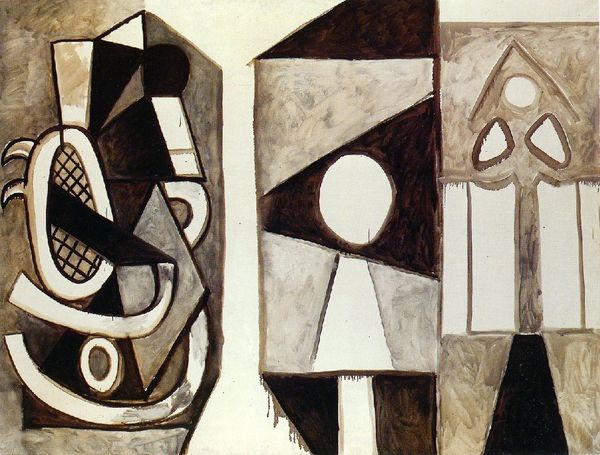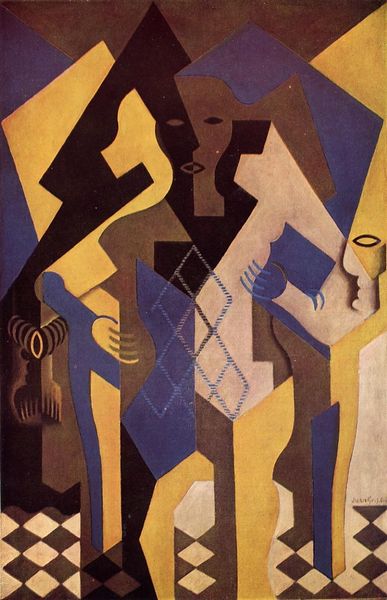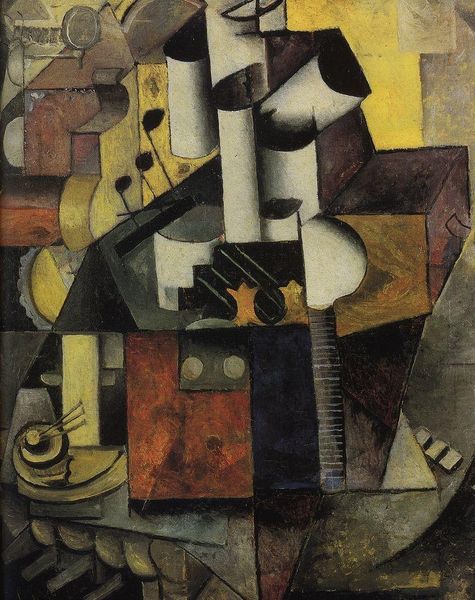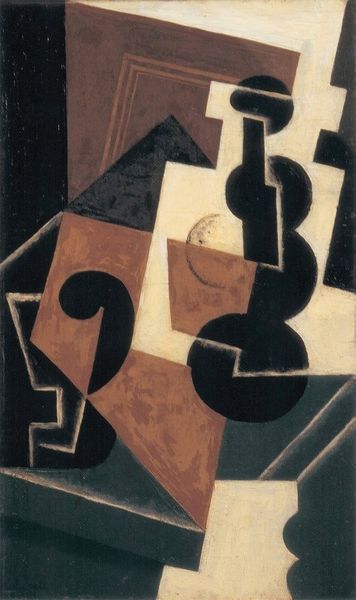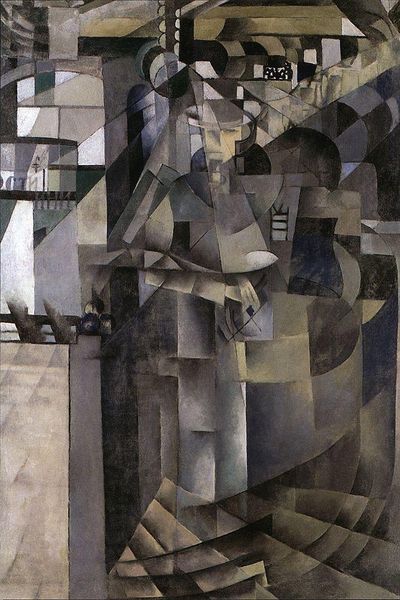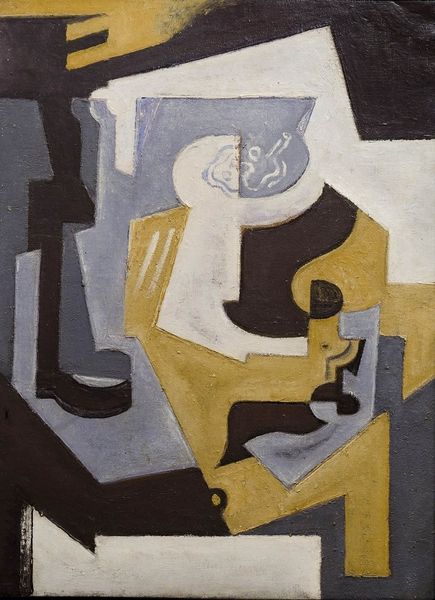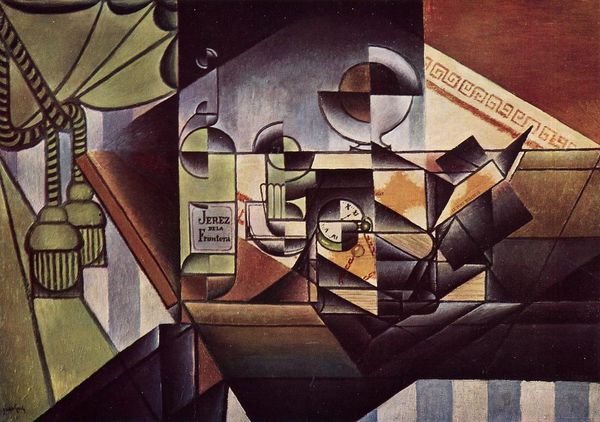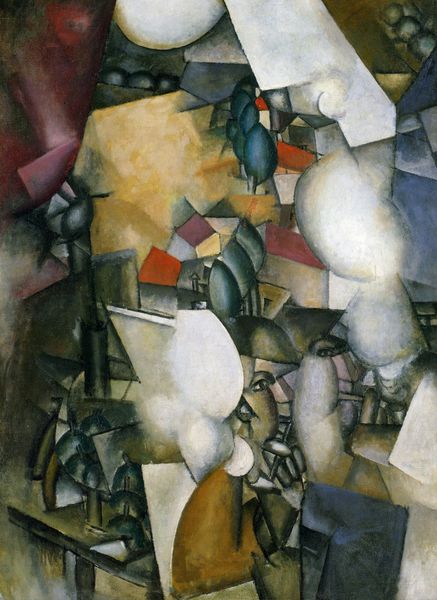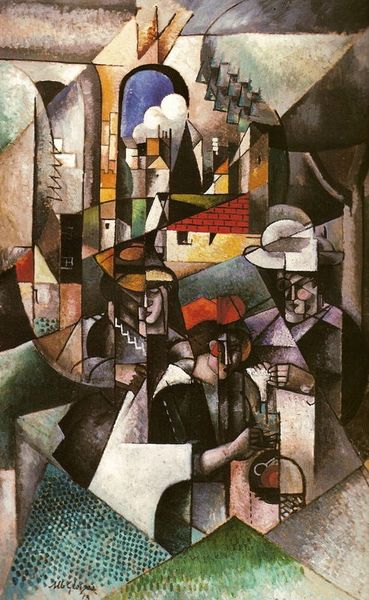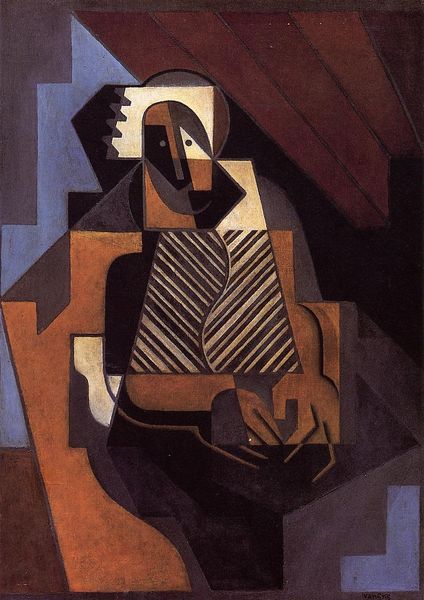
painting, oil-paint
#
cubism
#
abstract painting
#
painting
#
oil-paint
#
pattern
#
figuration
#
mural art
#
group-portraits
#
paint stroke
#
abstraction
#
modernism
#
monochrome
Copyright: Pablo Picasso,Fair Use
Editor: This is "Milliners (Workshop of the milliner)," an oil painting from 1926 by Pablo Picasso. The monochrome palette creates an atmosphere of starkness despite the very busy composition, almost as if the scene is about to fade into memory. What can you tell me about this piece? Curator: It's interesting that you point out the fading feeling. To me, this piece isn't just an observation; it's a critical engagement with the roles of women, labor, and artistic representation in the early 20th century. Consider the socio-economic status of milliners at the time. What does it mean to depict them within the fragmented language of Cubism, a style often associated with disrupting traditional perspectives? Editor: So the fragmented style is also a commentary on these women’s fragmented roles in society? Curator: Precisely! It asks us to consider how women were often confined to specific, almost modular, roles within the workforce and broader society. And Picasso, of course, inserts himself into this discourse, a man representing women workers within the conventions of modern art. What complexities do you think this raises about the gaze and power dynamics? Editor: It brings to mind questions of exploitation and how easily perspectives can be distorted. Is he offering commentary on this distortion, or is he a participant in it? Curator: That’s the critical tension at the heart of this work. The flattening of space and the abstraction of form could reflect the ways in which the female experience was being—and arguably still is—flattened and abstracted in dominant narratives. So how does understanding this broader context change your perception of the work’s initial “fading” feeling? Editor: Now it reads as more deliberate and pointed. The fragmented figures convey both their presence and their erasure simultaneously. It gives new meaning to that initial mood. Curator: Absolutely. Engaging with the history and power structures allows us to have a richer and more nuanced understanding of the painting and its position in the art world and social history.
Comments
No comments
Be the first to comment and join the conversation on the ultimate creative platform.
